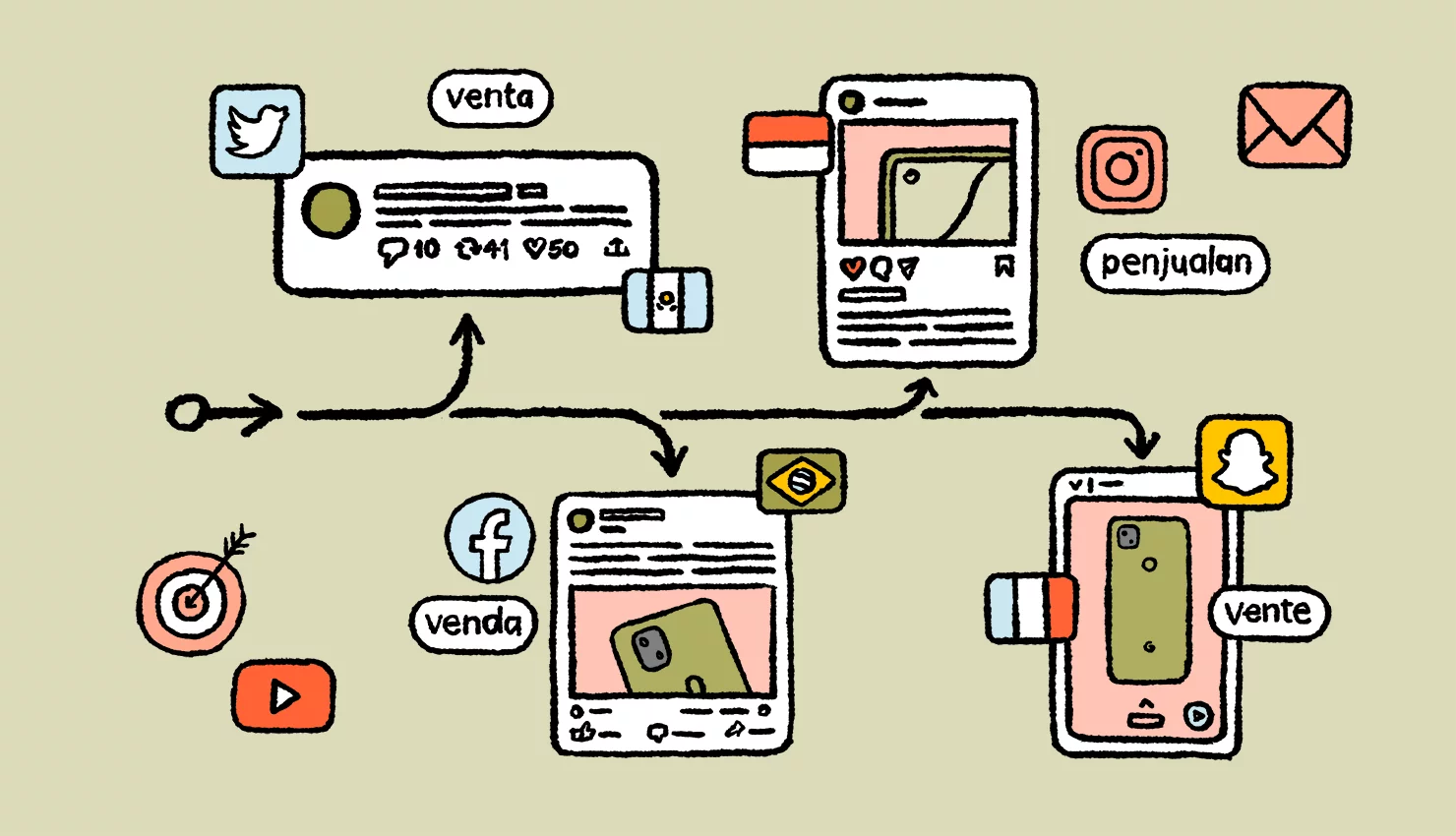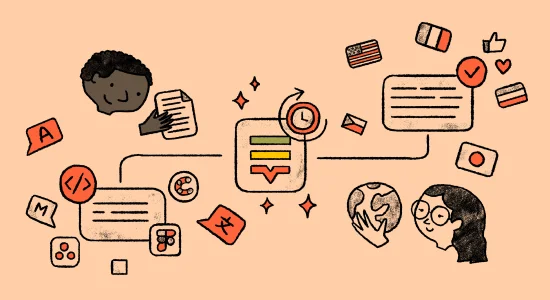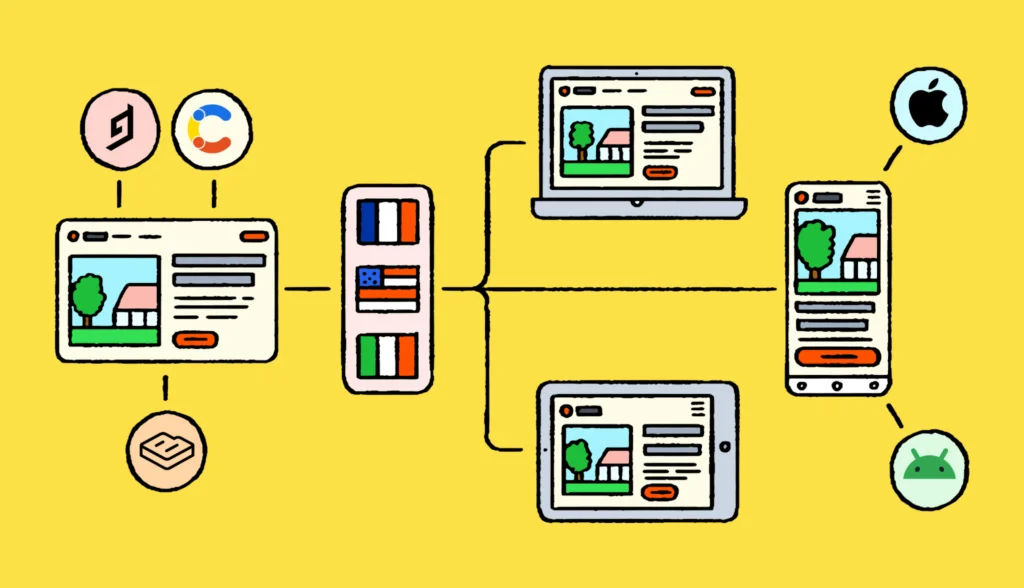The world’s top 10 SaaS companies localize their platforms into 17 different languages on average. Companies that invest in new languages grow. And companies that grow invest in new languages:
- Businesses that use localization services earn 1.5 times more than companies that do not.
- According to a global study, 56.2% of consumers say the ability to obtain information in their own language is more important than price.
Making your app and content available in your customers’ own languages is no longer “nice to have”— it’s fundamental to your organization’s growth. And choosing an agile, scalable, translation management system is a key driver for success.
Here we’ll look at 5 companies doing localization right that you can draw inspiration from.
Localization: a world without borders
Localization isn’t just translating text; it’s giving your product a passport to new terrains. It’s the art of adapting your product to languages, cultural norms, and the Herculean labyrinth that is legal compliance.
You don’t want to be a Roman in Tokyo doing as Romans do; you want to be a Roman in Tokyo doing as the Japanese do. It’s about building an empire, yes, but one that feels like home to the locals.
But what makes a good product manager in this global gambit? It’s an intuitive understanding of localization’s powers, and the passion to wield them with precision.
Kickstart your global expansion
To help you follow in the footsteps of the 3000+ companies who’ve successfully localized, check out Global-ready growth, our guide to unlocking international revenue.
DownloadNetflix – the streaming juggernaut
Netflix didn’t become a juggernaut by accident. When it comes to localization examples, they wrote the playbook. They aren’t just subtitles; they’re in the lifeblood of the shows. Take Narcos – a cultural colossus. Spanish in Mexico isn’t the same as in Spain. They’re similar, but the devil is in the details. Netflix nails those details.
Netflix knows the power of tailored content – from altering dialogues to mesh with local sensitivities to investing in regional content. In 2021, Netflix had over 203 million subscribers. When you’ve got that kind of audience, you don’t give them content – you give them a slice of life.
McDonald’s – the globally dominant golden arches
McDonald’s has been a global brand for over six decades, and its success is partly attributable to its localization efforts. The company has adapted its menus to meet the unique tastes and preferences of local consumers.
Tailoring Menus to Local Tastes
McDonald’s menus vary widely across the globe. In India, McDonald’s menus exclude beef products due to Hindu religious dietary restrictions, and instead offer vegetarian options. In Japan, McDonald’s offers a “Teriyaki Burger,” which is unique to the local market.
Incorporating Regional Ingredients
McDonald’s also incorporates local ingredients into its menus. For example, in Hawaii, McDonald’s offers the “Loco Moco” burger, which features a beef patty, rice, and gravy. In China, McDonald’s offers a “McLobster” sandwich, featuring locally sourced seafood.
Coca-Cola – popping the cap off cultural cognizance
Coca-Cola is a global beverage brand that recognizes the importance of localization. The company has been successful in adapting its marketing campaigns to fit local cultures and preferences.
Customizing Marketing Campaigns
Coca-Cola’s “Share a Coke” campaign is a prime example of successful localization. The campaign involved printing individual names on Coca-Cola bottles and cans, which led to increased sales and customer engagement. The company adapted the campaign to specific markets and languages, printing local names and phrases on bottles and cans.
Connecting with Local Communities
Coca-Cola has also connected with local communities through its marketing campaigns. For example, in China, Coca-Cola launched a campaign featuring young Chinese folk singers, which helped the brand connect with younger consumers who value tradition and cultural heritage.
IKEA – the furniture alchemist
IKEA is a Swedish furniture brand that has become a global success through its localization efforts. The company has adapted its products and stores to meet local market needs.
Adjusting Product Offerings
IKEA adjusts its product offerings to match local preferences. For example, in China, IKEA offers smaller furniture pieces and compact kitchens, which are more suitable for smaller living spaces. In the United States, IKEA offers larger couches and furniture pieces to fit the spacious American homes.
Navigating Cultural Nuances in Design
The design of IKEA products also takes into account cultural nuances. For example, in the Middle East, IKEA uses color schemes that appeal to Muslim customs. In India, the company offers furniture pieces with intricate carvings, which are traditional in Indian woodworking.
Spotify – the beat of a billion hearts
Not to forget, Spotify deserves a standing ovation. The streaming giant’s localization prowess lies in its ability to offer curated playlists based on regional music tastes. It’s the local DJ in every country it operates in, pulsating to the heartbeat of different cultures.
Spotify’s subscriber base ballooned from 20 million in 2015 to 144 million in 2020, and they attribute a good chunk of this growth to localization efforts.
Conclusion
The conquest of global markets requires a glocal approach. Think like a global company but act like a local entrepreneur. Understand the worldwide vision but filter it through the lens of local taste, preferences, and regulations.
We’ve seen some of the big ones today, and through these localization examples, we’ve unraveled how they craft magic. From Netflix’s intimate understanding of cultural nuances to McDonald’s shape-shifting menus – they don’t just break boundaries; they erase them.
Don’t just globalize, localize. Make the world your native land.
Enjoyed these?
Take a look at our case study library for 50 detailed examples of companies like Revolut, Elli, and Planday that are doing all the right things in localization, using the power of Localize.
Take me there



